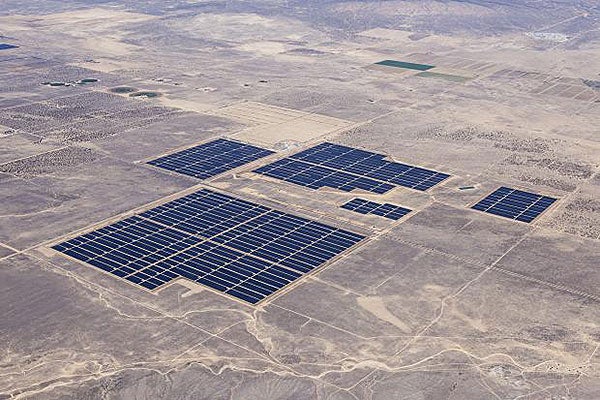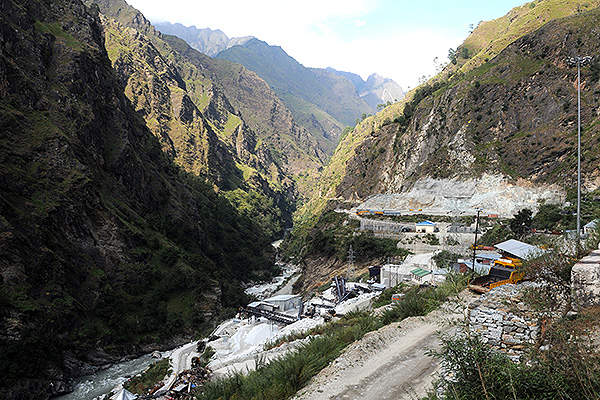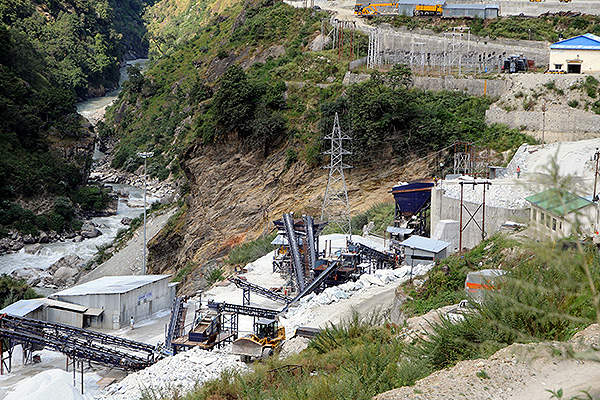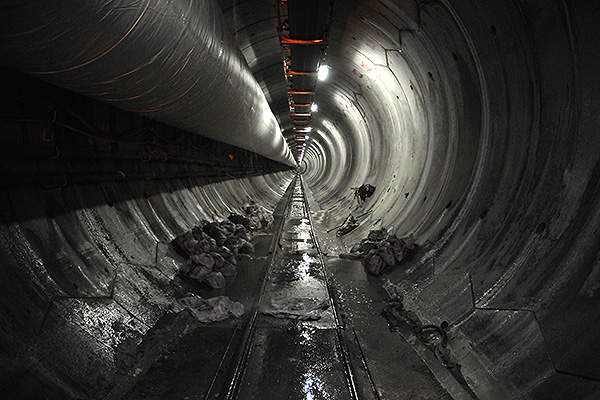
The Tapovan Vishnugad power plant is a 520MW run-of-river project being constructed on Dhauliganga River in Chamoli District of Uttarakhand, India. The plant is expected to generate approximately 2,558GWh of electricity per year.
Construction of the hydroelectric power project began in November 2006. Power production from the plant was expected to begin in 2012, but sluggish tunnel excavation works and flash floods in June 2013 delayed its inauguration. The project is expected to commence operations in 2016.
NTPC is developing the project at an estimated cost of approximately INR 29.78bn ($677m).
Tapovan Vishnugad power plant details
The Tapovan Vishnugad hydropower project will consist of four 130MW Pelton turbines, and a barrage constructed across the Dhauliganga River. The barrage will be 200m-long and 22m-high, and will consist of four gates measuring 12m-high and 14m-wide each.
The reservoir is expected to create a catchment area of 3,100km2. It also includes an intake sill located at 5m above the riverbed, at an elevation of 1,787m.
The river water will be diverted into the head race tunnel (HRT) via a desilting basin. The HRT will have a diameter of 5.6m and a maximum discharge capacity of 122.2cm3/s. The tailrace tunnel will be 493m-long and will have a diameter of 7m.
A surge tank at the end of the head race tunnel will be installed to minimise the water hammer during operation. Two pressure shafts with a diameter of 3.6m each will emanate from the surge tank. Each shaft will be bifurcated into two branches of 2.6m diameter penstock and will be to feed water into the turbine.
The project will comprise four D-shaped silt flushing tunnels (SFT) to carry flushing discharge from the desilting basin. A 93m-long D-shaped tunnel (also known as adit) will facilitate the excavation of the SFTs.
Plant construction details
Major works at the Tapovan Vishnugad power project include the construction of the barrage, head race and tail race tunnels, power house, and switchyard.
The head race tunnel package involves the excavation of a 12.1km-long head race tunnel (HRT) and three Adits. Approximately 8.6km of the tunnel will be excavated using a tunnel boring machine with an excavation diameter of 6.57m. The remaining 3.5km section will be excavated using Roadheader and will use drill and blast method, if required, depending on the geology.
The Adits will be excavated using drill and blast method. Ancillary works of the tunnel include the construction of 4.5km of road, and widening/upgrading some of the existing roads.
The construction work was severely affected by the flash floods in June 2013. The diversion tunnel was completely washed away along with the under-construction cofferdam. Approach road to the silt flushing tunnel was also damaged.
Contractors involved with the Tapovan Vishnugad power project
BHEL was awarded the contract to supply four 130MW Pelton type turbines for the Tapovan Vishnugad hydroelectric power project. The contractual scope also included the testing, commissioning and operation of the generators, switchgear and excitation system.
ABB was awarded the contract to supply transformers for the project.
L&T and Alpine Mayreder were awarded the contract for the headrace tunnel construction. The scope of the contract included the excavation of the tunnel and three Adits of total length 1.25km.
The contract for barrage and desilting chamber construction works was awarded to Rithwik projects.
Patel Engineering was awarded the underground powerhouse construction and related civil works contract. It also undertook the construction of surge shaft, pressure shaft, penstock, tail race tunnel, and switch yards.
The contract for the transportation of the tunnel boring machine was awarded to a joint venture of J.M.Baxi and J.C. Motors.
SSNR Projects was contracted for the construction of 73m-long barrages, river diversion/training works, and desilting basin works.
Commtel Networks were sub-contracted by BHEL for providing a closed circuit television (CCTV) system for the power house and the barrage stations.







